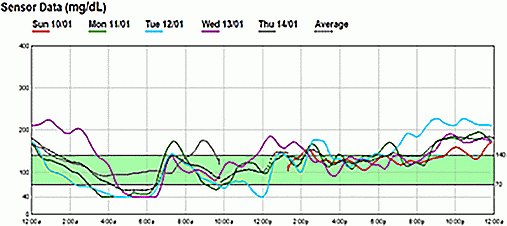ESPE2016 Poster Presentations Diabetes P2 (73 abstracts)
Glargine versus Detemir Insulin During the Honeymoon Phase in a Child with Type1 Diabetes Mellitus
Fawzia Alyafie a , Ashraf Soliman b & Ahmed Elawwa a,
aHamad Medical Center, Doha, Qatar; bUniversity of Alexandria Children’s Hospital, Alexandria, Egypt
Background: The honeymoon period of type 1 diabetes mellitus (DM1) is characterized by reduced insulin requirements to <0.5 Units/kg per day while maintaining good glycaemic control.
Case study: Seven years old boy who was diagnosed with type 1 diabetes mellitus presented with history of polyuria, polydipsia and weight loss for 3 weeks duration. His random Blood glucose=408 mg/dl with initial HBA1C 12.7%. Family history was unremarkable for diabetes or other autoimmune diseases. He had normal growth with no goitre or acanthosis nigricans. Systemic exam was unremarkable. He had low insulin level of 1.5 μu/ml and C peptide=0.27 ng/ml and normal thyroid function. AntiGAD antibodies were 12.6 IU/ml. Hamad was started on multiple daily injection of insulin glargine seven units in the evening+insulin Aspart before meals (using carbohydrate count (1 Unit/25 g) and BG correction (1 unit/for 50 mg/dl). After 2 weeks he developed frequent hypoglycaemias that required decreasing total insulin dose to 0.2 unit/kg per day (honey mooning). The dose of Glargine was decreased to 3 units/day at night and prandial Aspart discontinued as he was developing sever postprandial hypoglycaemia. In spite of that, hypoglycemia continued to occur. Continuous glucose monitoring (CGM) for 4 days showed severe hypoglycaemia reaching 40 smg/dl almost daily from 0330 h to 0630 h (Fig. 1). Glargine was discontinued and Detemir insulin given on two divided doses 2 units AM and 1 unit PM. CGM displayed no attacks of hypoglycaemia with highest blood glucose of 180 mg/dl and lowest of 85 mg/dl (Fig. 2).
Discussion: The ongoing debate comparing Glargine and Detemir insulins is over which insulin has a flatter pharmacodynamics profile and longer duration of action is still there. In this patient, Detemir insulin appears to be better in avoiding hypoglycemia between 0330 h to 0630 h probably due to the prolonged effect of Glargine and overlap of its doses.
Summary: Some patients of DM1 develop hypoglycemia during their ‘honeymoon period’ in which the symptoms remit and the patient requires little or no insulin. In our patient CGM monitoring showed that low doses of Detemir successfully abolished hypoglycemia. CGM proved to be a good method for managing this patient with frequent hypoglycemia.



 }
}



